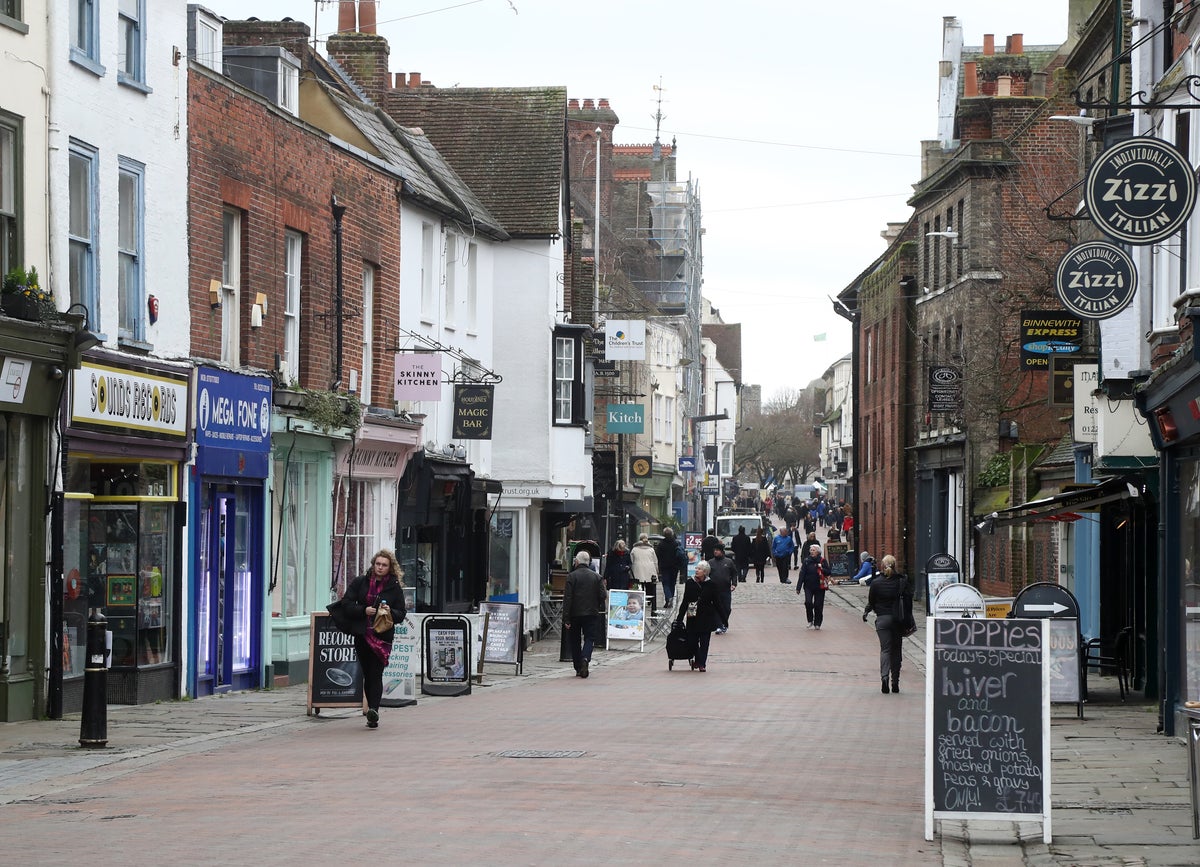
High streets and shopping centres felt the heat of Britain's cost of living crisis last week, according to bleak new figures indicating the country could be heading for a recession.
The number of shopping visits plunged more than 20 per cent last week compared to the same period in 2019, polling firm Ipsos found.
Good weather failed to tempt consumers out, with footfall down sharply in every region of the UK.
"The high street is really beginning to feel the heat from red hot prices with bills mounting all over the place,” said Susannah Streeter, senior investments and markets analyst at Hargreaves Lansdown.
Shoppers had helped to fuel a mini rally at the start of the year as the Omicron wave of Covid subsided. Footfall rose to 86 per cent of pre-Covid levels in February but has now gone into reverse.
"The situation looks bleaker again as food, energy and transport costs have risen steeply, sparked by the commodity chaos unleashed by the invasion of Ukraine," Ms Streeter added.
The latest figures indicate consumer confidence remains fragile after falling to a record low this month.
Experts suggested the drop in footfall could also be part of an emerging trend for people to ring-fence budgets for experiences like parties and holidays rather than spending money on goods, especially for the home.
Sales of furniture in household stores fell by 0.5 per cent in April as spending on occasion wear rose and UK daily flights surged in May by just over 350 per cent compared to the same period last year.
Ruth Gregory, senior UK economist as Capital Econmics said the full impact of low consumer confidence had not yet been fully felt.
“Cost of living pressures will continue to intensify and may take some time to feed through to retail sales,” Ms Gregory said.
“Household savings built up during the pandemic and a tight labour market mean that low consumer confidence hasn’t weighed on sales as much as it has at times in the past.”
Support announced by Rishi Sunak last week will help to some extent but real disposable incomes are still expected to fall by 1 per cent on average this year, Ms Gregory said.
It came as figures showed the cost of some basic supermarket ranges had jumped by as much as 50 per cent.
The Office for National Statistics (ONS) found that value-range pasta had seen the biggest increase among a basket of 30 items looked at, with the price going up by half.
Crisps saw the second fastest rate of increase in the year to April with a 17 per cent rise and 12 pence increase in cash terms rising from 71 pence in April 2021 to 83 pence in April 2022.
Five items in supermarkets' basic ranges rose by 15 per cent or more.
In cash terms, the largest price rises, on average, were measured for beef mince and chicken breast which were up 32 pence for 500g and 28 pence for 600g respectively.
However, the official statistics body found that, overall, prices for the cheapest food items had increased at around the same rate as for food prices in general.
It stressed that the figures, which had been produced after campaigning by food writer Jack Monroe, were experimental and only assessed prices for a relatively small range of items.
It comes as Russia’s blockade of Black Sea ports has left 25 million tonnes of grain stuck in Ukraine – threatening famine in the poorest countries, but with stark implications also for the UK, which relies on food imports.







